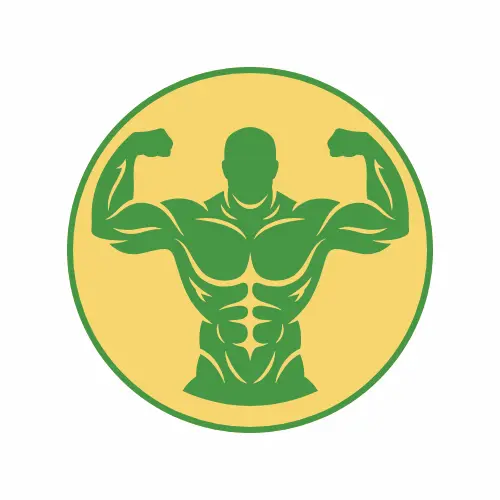What is HIT workout and who can benefit from HIT workout?
What is HIT Workout and How to Benefit
High-Intensity Training (HIT) has been gaining traction among fitness enthusiasts and casual gym-goers alike. With its focus on efficient, intense workouts, it's no wonder this training methodology has garnered such attention. But what exactly is HIT workout, who created it, who can benefit from it, and how can you start safely? Let's dive into these questions and explore the incredible benefits of this approach.
The Origins of HIT Workout
The concept of High-Intensity Training (HIT) was popularized by Arthur Jones in the late 20th century. As the founder of Nautilus, a company known for their innovative exercise machines, Jones developed HIT as a way to maximize muscle gain while minimizing workout time. His philosophy centered around the idea that shorter, more intense workouts could yield better results than traditional methods, which often required lengthy sessions with less intensity.
Jones' research and practical application of strength training paved the way for bodybuilders and everyday gym-goers to embrace a new style of working out. Since then, HIT has evolved, but the core principles remain the same: short, intense bursts of exercise followed by adequate recovery periods. This structure not only challenges your muscles but also boosts your metabolic rate, leading to greater fat loss.
Who Can Benefit from HIT Workout?
One of the most appealing aspects of HIT is its versatility; nearly anyone can take advantage of this powerful training method. Whether you're a seasoned athlete or someone just starting out on your fitness journey, HIT provides a scalable approach to effective workouts.
1. Bodybuilders: Those looking to build muscle mass will find HIT beneficial. The intensity of the workouts can stimulate muscle fibers more effectively than moderate-intensity workouts, promoting hypertrophy (muscle growth).
2. Weight Loss Seekers: If shedding pounds is your goal, HIT is an optimal choice. The high-intensity nature not only burns calories during the workout but also continues to burn calories long after you've finished, thanks to the afterburn effect, known scientifically as excess post-exercise oxygen consumption (EPOC).
3. Time-Limited Individuals: For those with busy schedules, HIT workouts are efficient. A complete session can typically be accomplished in 20 to 30 minutes, making it an excellent option for people who struggle to find time for longer workouts.
4. General Fitness Enthusiasts: Even if your goals aren't specifically centered around bodybuilding or weight loss, HIT can help improve cardiovascular fitness, endurance, and overall strength.
At What Age Can You Start HIT Workout?
If you're wondering at what age you can start engaging in HIT workouts, the answer is fairly flexible. Generally, teenagers who have reached puberty and possess a basic understanding of exercise can begin incorporating HIT into their routines, provided they do so under proper guidance.
As with any exercise program, it's crucial to consider individual fitness levels, health conditions, and previous exercise experience. Engaging in HIT at a younger age can mean a solid foundation for future fitness endeavors, but starting too early without proper form and guidance may increase the risk of injury.
For older adults, HIT can also be beneficial. However, it's essential to adapt the intensity and type of exercises according to personal fitness levels and any existing health concerns. Consulting with a healthcare provider or certified trainer is always recommended before beginning any new workout regimen, especially one as demanding as HIT.
How to Start HIT Workout Correctly to Avoid Injury
Starting HIT workouts can be exhilarating, but it's important to proceed cautiously to minimize the risk of injury. Here are some tips to get you started safely:
1. Warm-Up Properly: Before jumping into high-intensity exercises, ensure you warm up adequately. Dynamic stretches and light cardio can prepare your muscles and joints, increasing blood flow and flexibility.
2. Focus on Form: Maintaining good form is crucial in preventing injuries. Learn the correct techniques for each exercise, and don't hesitate to reduce your intensity or weights until you feel confident in executing movements properly.
3. Choose the Right Exercises: Start with bodyweight exercises or resistance bands before progressing to heavier weights or more complex movements. This approach allows your body to adapt gradually.
4. Listen to Your Body: Pay attention to how your body responds during and after workouts. If you feel pain (not to be confused with normal discomfort), modify the exercise or take a break. Recovery is just as important as the workout itself.
5. Set Realistic Goals: Begin with shorter intervals of high-intensity work, such as 20 seconds of intense effort followed by 40 seconds of rest. As your fitness improves, gradually increase the intensity and duration of the high-effort intervals.
6. Incorporate Active Recovery: Between your HIT sessions, make sure to include lighter activity days or rest days. This balance allows your muscles time to recover and grow stronger, reducing the risk of overtraining.
7. Cool Down After Workouts: Don't skip the cool-down period. Gradually lower your heart rate with light exercises or stretching to help prevent stiffness and promote recovery.
Conclusion
In summary, High-Intensity Training (HIT) has become a favored workout approach that offers numerous benefits to a diverse range of individuals. Rooted in the revolutionary ideas of Arthur Jones, HIT workouts promote efficiency in building muscle and losing weight, making them suitable for everyone from bodybuilders to busy professionals.
Regardless of age or fitness level, incorporating HIT into your routine can lead to impressive gains in strength and endurance. Just remember to start smart—prioritize warm-ups, work on your form, listen to your body, and allow adequate recovery. With the right approach, you'll harness the full potential of HIT workouts and enjoy a healthier, more active lifestyle. So why not give it a try? Your fitness journey awaits!
Articles

Hypogonadism is a medical condition where the body's sex glands, known as gonads, produce little or no hormones.

This is a one month cutting workout to get shredded. Drink lots of water and get enough sleep. Shock your muscles & increase metabolism speed.

Understanding PCT and Clomid for Restoring Natural Testosterone Production: A Comprehensive Guide
Customers Feedbacks
Please leave your feedback on products or service below.
Thank you beforehand.


